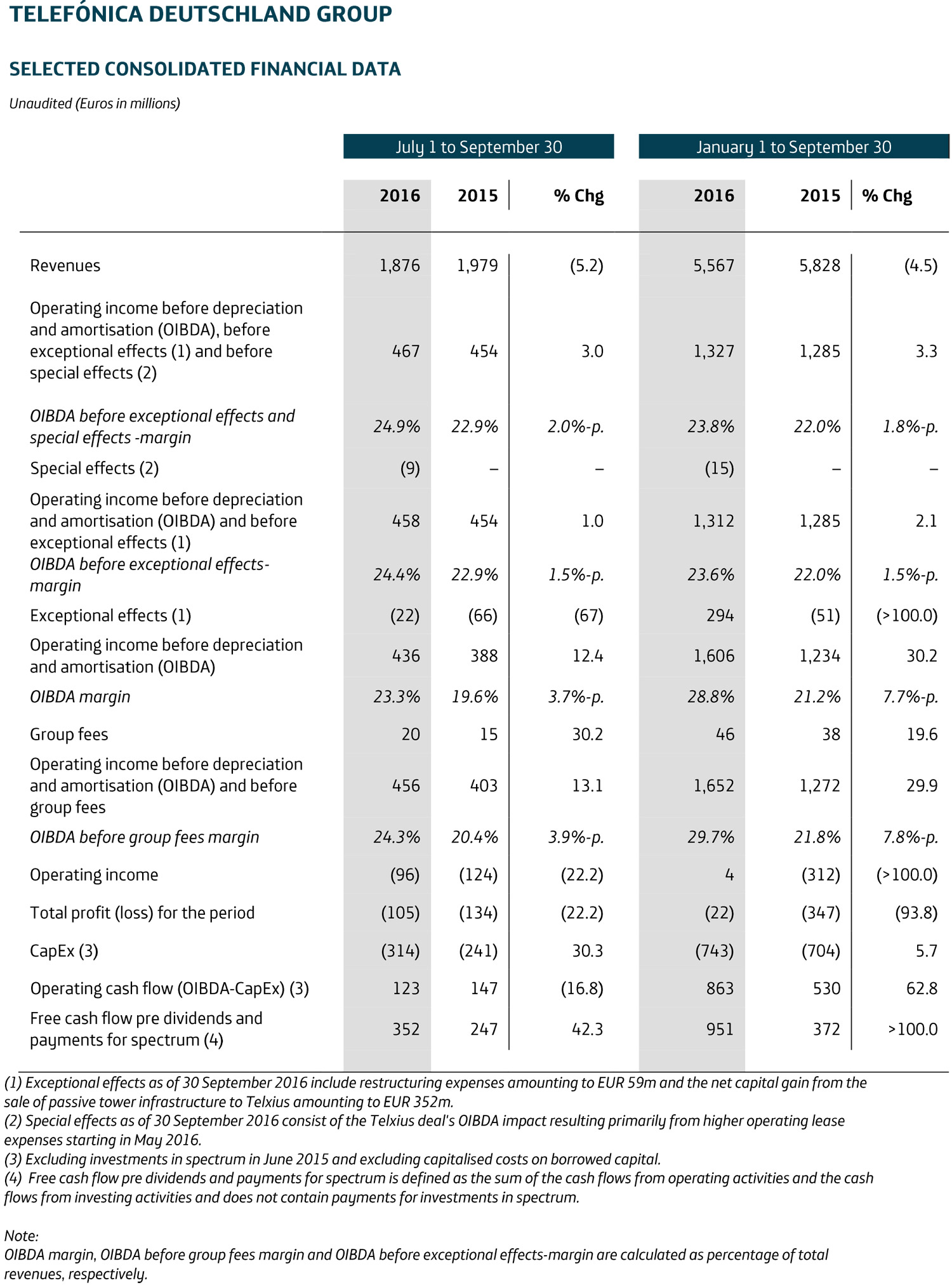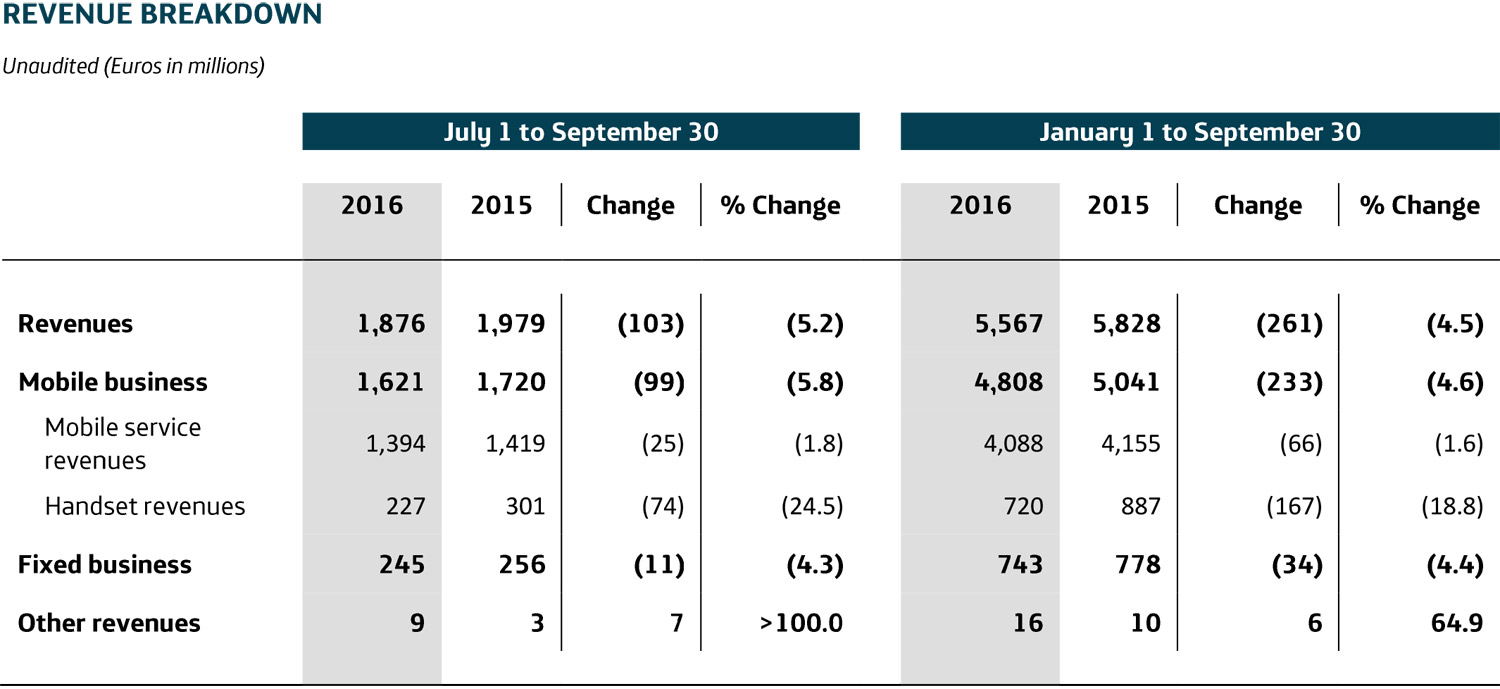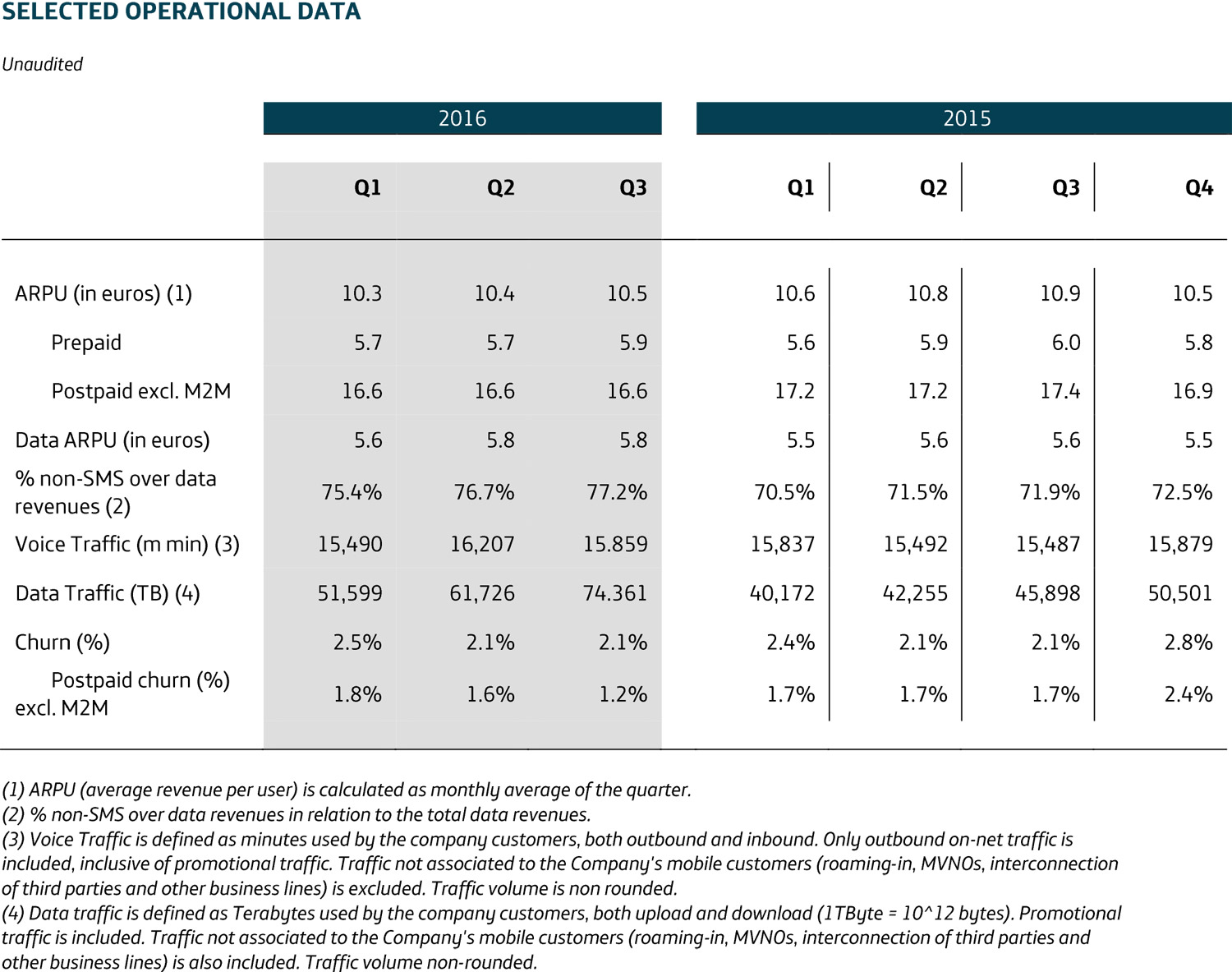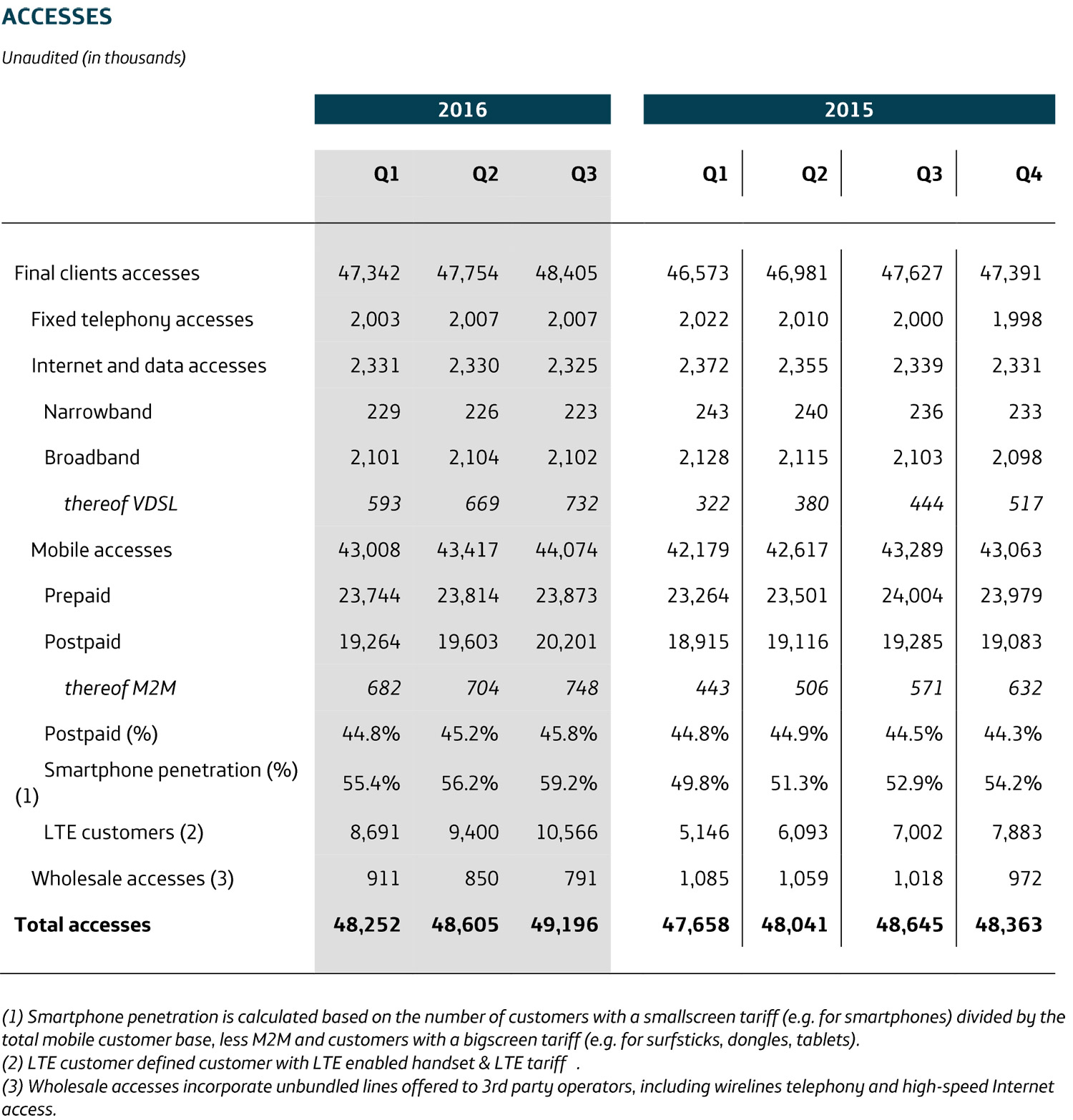26.10.2016
Preliminary results for January to September 2016:
Telefónica Deutschland posts biggest postpaid customer growth since merger
- Network integration progress and LTE expansion contribute to high popularity among customers: about 426,000 (1) additional postpaid customers in the third quarter of 2016
- Continued double-digit revenue growth from data business
- Mobile service revenues down slightly, as expected
- Adjusted OIBDA (2) benefits from synergies and increases 3.3% in first nine months
- Full-year outlook reiterated
- CEO Thorsten Dirks: “Our strong package of product, network and price continues to be the most popular in Germany. Telefónica Deutschland’s digital transformation will continue to gain momentum in 2017”.
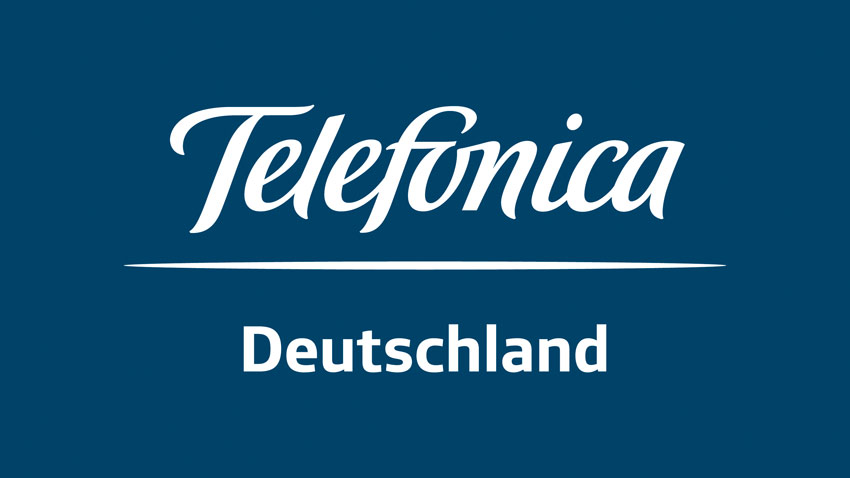
Two years after merging with the E-Plus Group, Telefónica Deutschland is right on track in terms of operations and finances. In the third quarter of 2016, the company reported its biggest growth in the number of postpaid customers since the merger completed, with about 426,000 additional subscribers. Over the past two years, the total number of mobile accesses increased by 1.9 million to 44.1 million. This means Telefónica Deutschland remains the top destination for mobile customers in Germany. Its high popularity among customers also reflected progress with the company’s network integration and expansion of its LTE grid.
The implementation of a data-centric business model resulted in significant data revenue growth during the first nine months. With customer-focused products such as the O2 Free tariff portfolio, Telefónica Deutschland positioned itself as a pioneer in the German wireless industry. At the same time, the company has also made progress as planned with the realisation of promised synergies. As a result, the adjusted OIBDA rose 3.3% to EUR 1.33 billion in the first nine months of the financial year (previous year: EUR 1.29 billion). In a competitive market environment and as a result of regulatory effects, mobile service revenues fell 1.6% over the course of the year. Based on its business performance, Telefónica Deutschland reiterates its projections for the full year.
“Two years after the completion of the merger, we are in a good position. Our strong service package of product, network and price continues to be the most popular in Germany. We are meeting our integration targets. Telefónica Deutschland’s digital transformation will continue to gain momentum in 2017”, said Thorsten Dirks, CEO of Telefónica Deutschland. CFO Rachel Empey explained: “We are right on track in terms of operations and finances and are reiterating our outlook for this financial year. With our network investments and trend-setting products, we are creating additional impetus to expand our data-centric business model”.
Focus on customer value with new products
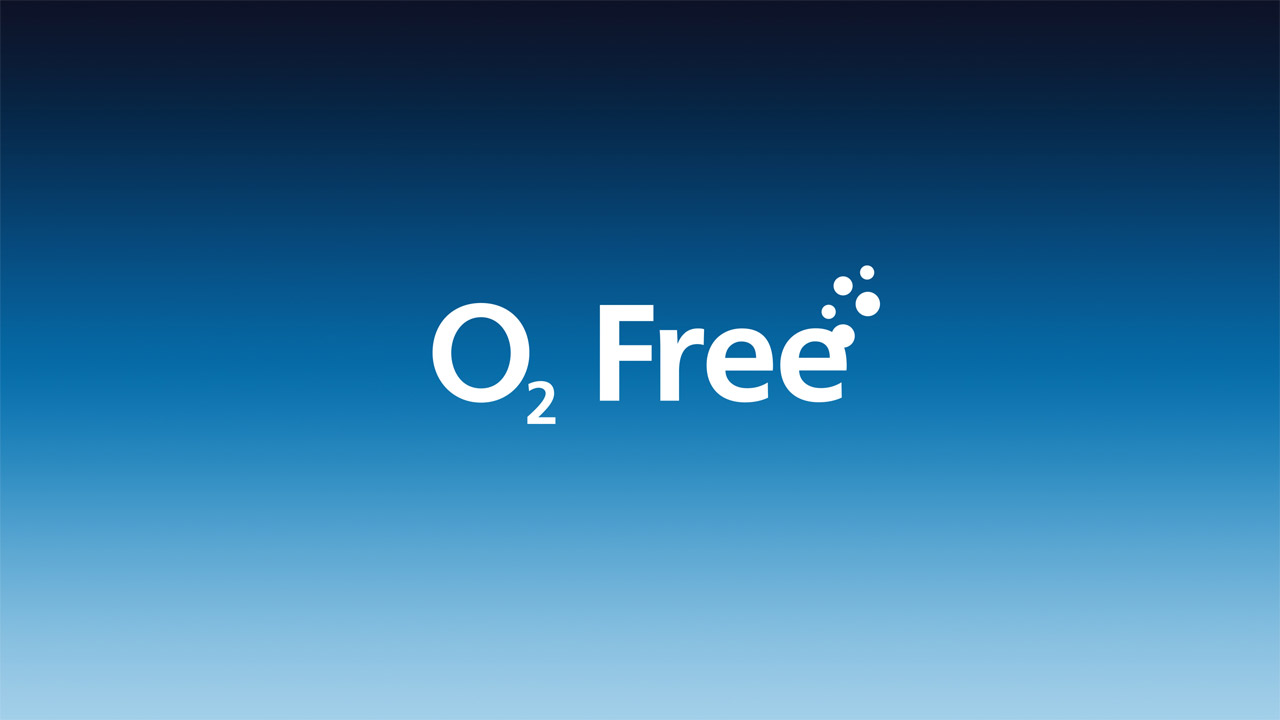
During the third quarter, Telefónica Deutschland shifted its emphasis further to its digital transformation with the aim of becoming the Onlife Telco. The company introduced innovative products to the market that are geared towards adding value for its customers. Telefónica Deutschland ushered in a new era in the German mobile industry with its O2 Free tariff programme. For the first time, customers are able to go online anywhere and everywhere at speeds of up to 1 Mbit/s even after they have used up their high speed data volume. This allows them to use messenger services, browse the web, watch YouTube videos or send pictures and emails at any time. Just a few days ago, Telefónica Deutschland revised its WhatsApp SIM tariff package, which has been successful since its launch in 2014. In November, search and recommendation functions as well as integrated video-on-demand services will be added to the O2 TV & Video app.
In the third quarter, Telefónica Deutschland also made headway in establishing two new business areas: Advanced Data Analytics (ADA) and Internet of Things (IoT). The company reached another milestone for ADA when its data anonymisation platform was certified by TÜV Saarland. The anonymisation process is currently being used in a research project in Stuttgart, which is exploring the potential of mobile data in the context of traffic planning. In September, Telefónica Deutschland presented special ADA applications for retail stores to the public.
Customers value service package consisting of product, network and price
Telefónica Deutschland reported a significant increase in customer accesses in the third quarter. The number of mobile accesses rose by approximately 656,000. At about 426,000 – the largest amount since the merger in October 2014 – the majority of these came from the postpaid segment. The number of postpaid customers now exceeds 20 million for the first time. Meanwhile, the company continued to focus on measures aimed at existing customers. As a result, the churn rate for postpaid customers fell to 1.5% last quarter, the lowest level since the merger. As of 30 September, the company had over 44.1 million total mobile accesses – up 1.9 million since the transaction was completed two years ago. This shows that customers value Telefónica Deutschland’s package of product, network and price.
This was confirmed by the latest ratings on network quality in the “Netzwetter” test by connect magazine. In this user-based test, Telefónica Deutschland’s network scored particularly well with regards to availability and stability and has narrowed the gap against the competition since the start of the year. In the network test by SMARTPHONE magazine, Telefónica Deutschland’s network was praised for providing the best value for money. During the third quarter, the company invested more heavily in network integration in order to boost network reliability. By the end of September, LTE coverage had risen to 77%.
High demand for streaming services drives data business
Telefónica Deutschland continues to pursue mobile data business and reported significant growth in this area over the quarter, primarily thanks to the healthy demand for video and music streaming. At the end of September, average monthly data consumption among O2 postpaid LTE customers was 1.6 GB – up 46% from last year. Telefónica Deutschland anticipates that the expansion of the O2 TV & Video app will have an added positive impact on data consumption in the coming months.
Demand for data among customers is also reflected in the increasing interest in LTE speed. As of the end of the quarter, 10.6 million customers had an LTE tariff with a corresponding device, up 51% from last year.
As a result, non-SMS mobile data revenues climbed to EUR 1.72 billion for the first three quarters, a 13.2% increase over the same period of the previous year.
Effects of regulation and intense competition
The industry continues to be characterised by intense competition. This can be seen in the development of mobile service revenues. From January to September, these decreased by 1.6% year-on-year to EUR 4.09 billion. At the same time, regulatory effects impacted the business. In particular, this includes the gradual decrease of roaming charges and the further reduction of mobile termination rates. Adjusted for these factors, mobile service revenues would only have decreased by 0.9% in the third quarter, a substantially lower figure. Including these effects, revenue fell 1.8% from the same quarter of the previous year.
Handset sales were EUR 720 million as of the end of September, 18.8% lower than last year's strong third quarter. Customers are increasingly drawn to affordable smartphones and tablets, and are waiting longer before switching to new devices – a trend that can currently be observed throughout Europe. Fixed-line sales declined 4.4% to EUR 743 million, whereas the number of retail VDSL connections continued to remain stable.
Total revenues reflect the reduced performance of handset sales and the intense competition in the market. For the first nine months of 2016, this resulted in a 4.5% decrease to EUR 5.57 billion.
OIBDA benefits from integration synergies
Telefónica Deutschland is fully on schedule regarding the realisation of the promised synergies. Following the realignment of the brand and product portfolios, the physical integration of the LTE networks of O2 and E-Plus is gaining momentum. This is currently being carried out region by region with special emphasis on urban areas. At the same time, savings arise from the ongoing consolidation of the overall network to approximately 25,000 mobile base stations.
The realisation of synergies continues to have a positive effect on operating income before depreciation and amortisation (OIBDA). Adjusted for exceptional and special effects (3), OIBDA for the first nine months of 2016 was EUR 1.33 billion – an increase of 3.3% year-on-year. The adjusted OIBDA margin improved during the reporting period by 1.8 year-on-year to 23.8%.
Including special effects such as the April sale of about 2,350 wireless towers to Telxius, a subsidiary of Telefónica S.A., OIBDA reached EUR 1.61 billion as of the end of September – an increase of 30.2%. The net result for the period from January to September was EUR 22 million. Depreciation resulting from the integration of E-Plus and the network consolidation continued to have a negative effect. This has no impact on the company's liquidity and therefore does not reflect the company's operational performance. The sale of towers to Telxius had a positive effect on the net result for the period.
Increasing investments in the network
The company increased investments (CapEx) over the last nine months. Investments rose 5.7% from the previous year to EUR 743 million. The main factor was a significant increase in spending on the integration of the networks since the middle of the year. Free cash flow (4) (FCF) totalled EUR 951 million at the end of September 2016. This includes a cash inflow of EUR 587 million from the tower transaction. In the previous year, free cash flow amounted to EUR 350 million after nine months. Consolidated net financial debt (5) amounted to EUR 1.2 billion at the end of the reporting period. The leverage ratio therefore remains unchanged at 0.7, clearly within the target range of a maximum of 1.
Outlook reiterated for the full year
After the conclusion of the first three quarters of 2016, Telefónica Deutschland is fully on track in terms of operations and finances. As a consequence, the company reiterates its business outlook for the current full year. As announced, Telefónica Deutschland expects to pay its shareholders an increased dividend of EUR 0.25 per share for the 2016 financial year.
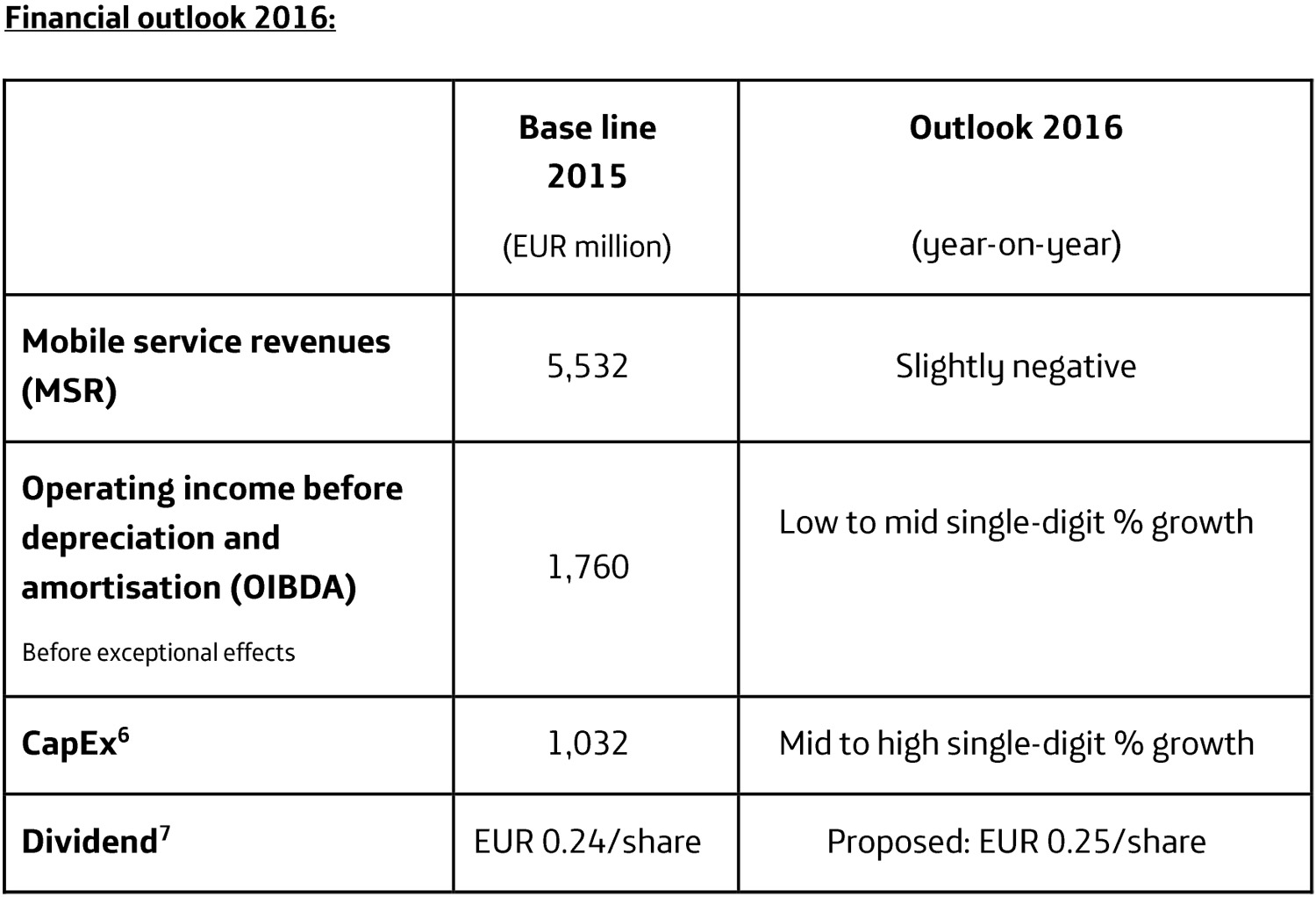
| 1) Excluding reclassification of 172,000 customers from prepaid to postpaid as part of the customer migration activities 2) Excluding exceptional and special effects. As of 30 September 2016, exceptional effects include restructuring expenses amounting to EUR 59 million (2015 comparative period: EUR 66 million) and the net capital gain from the sale of passive tower infrastructure to Telxius amounting to EUR 352 million, while in the same period of 2015 a one-off gain from the sale of yourfone GmbH was registered. As of 30 September 2016, special effects consist of the impact that the Telxius deal had on OIBDA (EUR -15 million in the first nine months of 2016) resulting primarily from higher operating lease expenses since May 2016. 3) Excluding exceptional and special effects. Exceptional effects from July to September 2016 encompass restructuring costs in the amount of EUR 22 million (2015 comparative period: EUR 63 million) and the special effects on the OIBDA following the Telxius transaction (EUR -9 million in the third quarter of 2016) resulting primarily from higher operating lease expenses since May 2016. 4) Free cash flow before payments for dividends, spectrum and acquisition costs for E-Plus are defined as the sum of cash flow from operating and investing activities. 5) Net financial debt includes current and non-current interest-bearing financial assets and interest-bearing financial liabilities as well as cash and cash equivalents; expenses for mobile frequencies are not included. 6) Excluding investments in spectrum in June 2015. Spectrum capital expenditure amounted to EUR 1,198 million (including capitalised costs on borrowed capital). 7) Proposal to the Annual General Meeting 2017. |
